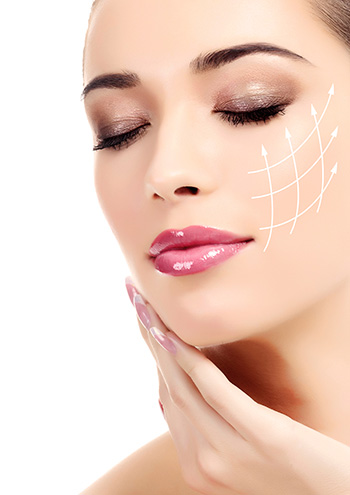Traditional Facelift
The effect of gravity, sun rays and the stress of daily life result in signs of aging on people’s faces. Deep lines, wrinkles, folds and fat accumulations occur on the face on and around the eyelids, around the mouth and cheeks, under the chin and on the neck. Facial tissues decrease and weaken with the effect of aging or genetically and droop over the facial bones in the direction of gravity. Generally, around the age of 50, the facial skin starts to feel “loose”. The skin which feels loose also wrinkles. What is done in this surgery is to remove this excess skin and tighten the skin.
Facelift surgery has been done for almost a hundred years and is therefore referred to as the “traditional” surgery. However, there have been revolutionary innovations in the last decade.
How Much Scarring is Left?
There will be some scarring left after this surgery since the incisions will be made in front of and behind the ears. If the incision in front of the ear is made through the ear, the scar will be invisible if you do not have a wound healing problem since most of the incision will be inside.
You can assume that the incisions made in the scalp will not leave any scar. As a result, the scar that will be left after the surgery is usually indistinct.
After the Surgery
- You may have mild pain for a few days, but it can be relieved with painkillers (You should immediately inform your surgeon in case of severe or persistent pain or sudden swelling of your face).
- It is normal to have bruises and swelling on the face. These will disappear within 7 to 10 days.
- You may feel sensitivity on your skin. Some numbness of the skin is quite normal. These will resolve in a few weeks or months.
- The face takes its true shape within a few weeks. Your surgeon will recommend that you keep your head elevated for a few days to reduce the swelling.
- The bandage of the head is opened the next day and the dressing is done. Do not be surprised by the pale, purple and swollen face. Keep in mind that you will regain your normal appearance in a few weeks.
- 7-10 days later, some of the stitches are removed. The stitches on the scalp may take a little longer to heal. You will get up in a day or two.
- Permanence can last for many years, but this depends on the type of skin (thin skins form lines more quickly) and lifestyle (stress, alcohol, etc.).
Important Reminders
At first, your face may look a little different to you. It may feel unfamiliar, especially due to swelling and tightness, your gestures may be a little tense and you may worry about scars. The bruises may continue for 2-3 weeks. It is not surprising that some patients are disappointed and depressed at first. In the third week, you will feel better and look better. Most patients can return to work within 10-14 days. If you wish, you can cover up the remaining bruises with camouflage makeup. If you realize that the results will not show up immediately, you will be happier the days ahead.
For several months, your skin may feel dry and rough. So, moisturizing creams and light massages will help you. Men may feel unfamiliar in the first days with the bear density and scars in the areas to be shaved and the location of the hair follicles due to relocation of the skin. You will have new scars, but they will be hidden in the scalp or natural lines. These scars will fade and gradually decrease over time.
Face lift surgery does not stop aging. The lift caused by the surgery is not permanent. Your facial skin will continue to age. After 5-10 years, you may want to have another facelift surgery. On the other hand, the effects of the facelift surgery will continue. Years later, you will continue to look better than you did without facelift surgery. However, the most important thing to know is that an early and untimely facelift surgery will do you more harm than good. For this reason, facelift surgeries are performed not to prevent symptoms from occurring, but to correct the symptoms.

